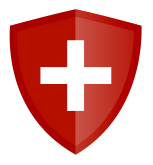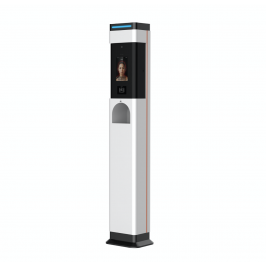Reopening a Business during COVID-19: 5 Steps

COVID-19 has severely affected the global economy and all industries as governments enforced lockdowns to slow the spread. Supply chains faltered and geopolitical tensions rose. Fortunately, authorities all over the world are finding ways to relax or eliminate stay-at-home directives and help industries overcome the crisis.
In the US, President Trump unveiled Guidelines for Opening Up America Again. This Business reopening guide is based on instructions from public healthcare specialists and intended to assist both authorities and owners when reopening a business during COVID-19. Actually, there are numerous regulations and playbooks from governments that employers must obey while they are adapting to the new normal. Although each industry must deal with its own unique issues to overcome coronavirus business impact, there are plenty of common goals for all industries. For example, every employer wants to develop business, create additional revenue, make a more secure environment for the workers, and set the foundation for a better long-term future. To assist industry leaders to reach these goals, we’ve created this guideline based on the US regulations and well-tried approaches.
Step #1: Create a Reopening Plan
Reopening a business after COVID-19 lockdown measures is no cakewalk. However, you’ll be able to do it successfully if you create a proper reopening plan. What should you consider? You must consider that lots of your consumers are faced with lower income and shifted needs because of today’s circumstances. Therefore, plan accurately and try to make your business pliant and adaptable to your clients’ new demands and budgets. Also, watch for opportunities in your sector; there are lots of them in the post-pandemic society. Also, when rethinking opportunities for your business and planning, ask yourself these questions:
- What are the regulations for business reopening in your state?
- How to protect workers and clients from Coronavirus contamination?
- Who of your workers can work from home?
- Can you still receive what you need from vendors? How to improve client relationships?
Furthermore, as we touched on above, every state develops general and industry-specific regulations. By understanding these rules and recommendations, you’ll be able to make a perfect reopening plan, compliant with advanced practices. So, to build a successful reopening plan you have to review your business model and learn all-new, post-pandemic directions and instructions in your sector.
Step #2: Implement Body Temperature Monitoring
One of the numerous effects of COVID-19 on business is that people are cautious about staying in a confined room with others. That’s why they try to avoid visiting high-traffic areas. If you want to get your clients and workers back, you have to design a safe atmosphere for them in your facility. How to do it?
The first thing you should do is implement consistent body temperature monitoring at entrances and checkpoints. Under today’s hazardous circumstances, regular temperature checks are an effective method to curb COVID-19. According to the World Health Organization (WHO), fever is the first sign of Coronavirus infection. Detecting individuals with elevated temperatures will prevent them from entering the facility and exposing other people to the risk of cross-contamination. That’s why one of the smart temperature screening systems is an emergency purchase nowadays. Below you’ll find the most effective, well-established technologies that the market offers:
- Walk-through metal detector with thermal scan - this equipment is designed for high-traffic areas and provides the highest level of security. It checks for metals, identifies individuals, and checks their temperature. The machine boasts visual and audio alerts, so if a person with an elevated temperature is detected, he/she won’t go away unnoticeable.
- Smart kiosks and/or smart sanitizing hubs - these machines feature facial recognition algorithms and can be used as employee tracking tools with a temperature monitoring function. Such devices can be integrated with the organization’s existing security system.
- Thermal camera - this advanced device can be used discreetly for surveillance purposes and constant health monitoring. It catches not just skin temperature, but core body temperature, which is a key metric for fever. The camera is capable of screening vast groups of people in high-traffic areas.
All these machines are contactless, and they send notifications once individuals with elevated temperatures are identified so that personnel can react accordingly. They are easy to install, use, and maintain. All in all, smart temperature readers can get the ball rolling: when your customers understand you have their health in mind, they’ll visit your facility with pleasure. The same goes for workers: they must feel secured, then they’ll be able to work to their fullest.
Step #3: Prioritize Your Employees’ and Customers’ Health & Safety
Your workers’ and clients’ safety and health must be your priority when reopening your business during COVID-19. Ryan Reiffert, a successful businessman and business attorney, recommends starting by learning and implementing local directives for hygiene and security and CDC guidelines. He says, “If the signs are required, put them up; if face masks are mandated, wear them.” If you disregard these directions and restrictions, you expose your company to the risk of legal problems.
However, it’s just a pivot point for your own company’s safety measures. You should take extra precautions in the office to add an extra layer of protection for both clients and workers. Here are well-tried tips for you.
Promote clean workplaces and hygiene in the office - during the existing virus threat, all surfaces and objects must be wiped with disinfectant several times a day. Plus, at the end of the working day, an office-cleaner should clean surfaces with soapy water and then wipe them with disinfectant.
Make social distancing a part of the company’s policy - people must be physically as far from each other as possible to avoid coronavirus transmission. Suggest shifts to your employees if it’s possible; place desks/tables at a 1-meter distance from each other; position reminders on the floors and walls which promote keeping a social distance.
Promote regular hand washing and sanitizing - the WHO recommends washing hands for no less than 20 seconds - this is the best method to kill bacteria and avoid contamination. Another effective way to kill pathogens on your hands is hand sanitizing.
Create excellent respiratory hygiene at workplaces - ensure that masks and paper tissues are available at work spaces and high-traffic hubs. Always insist on wearing masks by workers who are developing a cough or runny nose. Display posters that show how to cough and sneeze properly without passing on the virus.
These are easy and budget-friendly ways to protect your clients and workers. But at the same time, they do help us feel more confident and adapt to new, hazardous conditions.
Step#4: Make a Training for Workers and Create Interactive Strategies
Ensure your workers are aware of new laws and procedures before business reopening. Cooperate with your lawyer and HR director to produce instructions that will reveal new sanitation and safety procedures, new client service tactics, innovations in job responsibilities, renovate policies on sick leaves, and remote work.
Jessica Lambrecht, a patron of The Rise Journey, a company that works out organizational strategies for businesses, recommends setting aside time to discuss with workers all key questions before reopening. Ensure that you discuss the company’s new strategy in detail, explain new workplace safety standards to employees, and distribute protocol for handling concerns or reporting problems.
You should consider regular interaction with your workers. For instance, plan for company-wide email updates, schedule meetings with top-managers, establish weekly Zoom conferences or online meetings, etc. Effective and clear communication is a must for business reopen. It’ll help manage processes smoothly and minimize workers’ worries.
Step #5: Update Your Marketing Strategies
The right marketing strategies are vital during the ongoing Coronavirus pandemic. Foot traffic is diminishing because of the virus, so paid traffic must make up for that. Decide on the ways to renew your marketing policies to relate to past clients and attain new ones. You should be more productive on social media, adopt content marketing, and associate with bloggers and influencers.
Adjust your communication and messaging methods along with developing your distribution ways to obtain a greater client base. Additionally, create a project that highlights your updated propositions. Think in detail the way you’ll inform clients of your reopen and positive adjustments to your business.
Final Words
Reopening a business during the ongoing pandemic is a challenging task. Business owners must be creative and adaptable to meet new clients’ needs and attitudes. They should also follow the news and industry announcements to stay well-informed. Finally, they have to buy advanced temperature monitoring systems to secure their workers and consumers. But despite all the difficulties, we all are eager to reopen our businesses, so let’s arm ourselves with the best technology, experts’ recommendations, and make our industries thrive!





